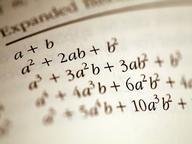Quiz Answer Key and Fun Facts
1. A square's area is determined by the formula s^2 (side squared), where s is equal to the length of one side of the square. If the square's area is 256 square inches, determine the number of inches in the length of one side of the square.
2. A rectangle's area is determined by the formula L*W, where L is equal to the rectangle's length and W is equal to the rectangle's width. If W = 2*sqrt2 inches and the area of the rectangle is 24 square inches, determine the number of inches in the length of the rectangle. Express your answer in simplest radical form.
(Note: sqrt denotes a radical and will for the rest of the quiz.)
3. Determine the positive integer closest to sqrt52.
4. The perimeter of a rectangle is determined by the formula 2L + 2W, where L is the length of the rectangle and W is the width of the rectangle. Given that the length of the rectangle is 12*sqrt2 centimeters long and the perimeter of the rectangle is 30*sqrt2 centimeters, find the width of the rectangle in centimeters. Express your answer in simplest radical form.
5. The length of a diagonal of a square can be determined by the formula 2 * s^2 = c^2, where s is a side length of the square and c is the diagonal length. A square's side lengths are one. If the diagonal of this square is used as a side for another square, what is the area of the new square?
6. The area of a triangle can be determined by the formula bh/2, where b is the base length of the triangle and h is the height of the triangle. Given that the base length of a triangle is equal to 8*sqrt3 units and the height is equal to 4*sqrt3 units, determine the number of square units in the area of the triangle.
7. You draw two squares. One has a side length of 6*sqrt5 inches, and the other has a side length that is 1/3 of the length of the first square. In square inches, what is their combined area?
8. The formula for the Pythagorean Theorem is a^2 + b^2 = c^2, where a and b are legs of a right triangle and c is the hypotenuse. Given that the length of legs a and b are 4 and 8 respectively, find the length of the hypotenuse. Express your answer in simplest radical form.
9. A circle's area is determined by the formula pi * r^2, where r is the circle's radius. The radius can be determined using the formula r=d/2, where d is the diameter of the circle. Given that a circle's diameter is 6*sqrt7 meters, determine the area of the circle, in square meters. Express your answer in terms of pi.
10. The diagonal of a cube is 12 centimeters long. What is the number of centimeters in the length of one side of the cube? Express your answer in simplest radical form. (Hint: You'll use the Pythagorean Theorem several times.)
Source: Author
xxharryxx
This quiz was reviewed by FunTrivia editor
crisw before going online.
Any errors found in FunTrivia content are routinely corrected through our feedback system.
